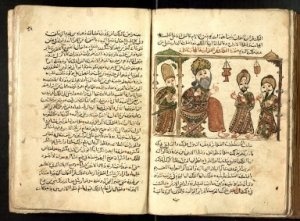Conclusion?
 The Syrian manuscripts attempted to preserve and reproduce the “original” which stopped at two hundred and seventy-one nights but the Egyptian branch of manuscripts, Haddawy tells us in the introduction, “shows a proliferation that produced an abundance of poisonous fruits that proved almost fatal to the original” (Nights xv). Haddawy calls such additions “poisonous fruit” because he feels they destroyed its Arabic homogeneity. Besides deleting, modifying, adding, and borrowing from each other, “the copyist, driven to complete one thousand and one nights, kept adding folk tales, fables and anecdotes from Indian, Persian and Turkish, as well as indigenous sources, both from the oral and from the written traditions” (Nights xv). The tale of Sinbad is one such addition (the adventure is old, but its inclusion in The Arabian Nights is not). “The Story of Aladdin and the Magic Lamp” is actually a forgery written by a Frenchman named Galland and then translated into Arabic by a Syrian living in Paris to make it seem authentic, as evidenced by the French syntax and certain turns of phrase (Nights xvi).
The Syrian manuscripts attempted to preserve and reproduce the “original” which stopped at two hundred and seventy-one nights but the Egyptian branch of manuscripts, Haddawy tells us in the introduction, “shows a proliferation that produced an abundance of poisonous fruits that proved almost fatal to the original” (Nights xv). Haddawy calls such additions “poisonous fruit” because he feels they destroyed its Arabic homogeneity. Besides deleting, modifying, adding, and borrowing from each other, “the copyist, driven to complete one thousand and one nights, kept adding folk tales, fables and anecdotes from Indian, Persian and Turkish, as well as indigenous sources, both from the oral and from the written traditions” (Nights xv). The tale of Sinbad is one such addition (the adventure is old, but its inclusion in The Arabian Nights is not). “The Story of Aladdin and the Magic Lamp” is actually a forgery written by a Frenchman named Galland and then translated into Arabic by a Syrian living in Paris to make it seem authentic, as evidenced by the French syntax and certain turns of phrase (Nights xvi).
Continue reading “Eros and the Arabesque: An End to 1001 Nights?”